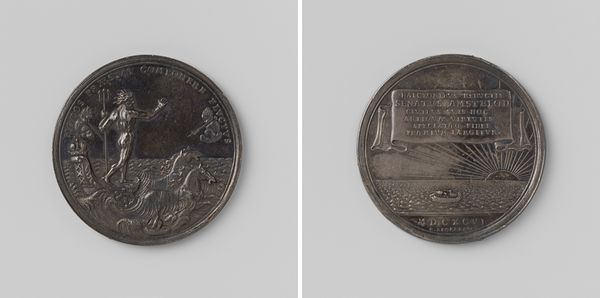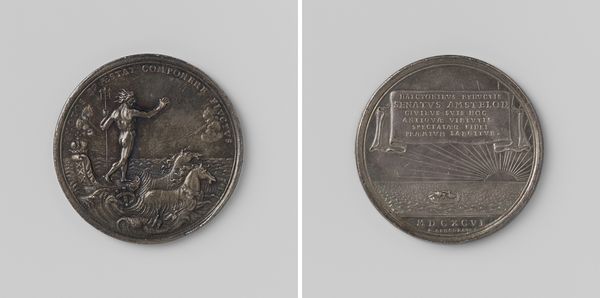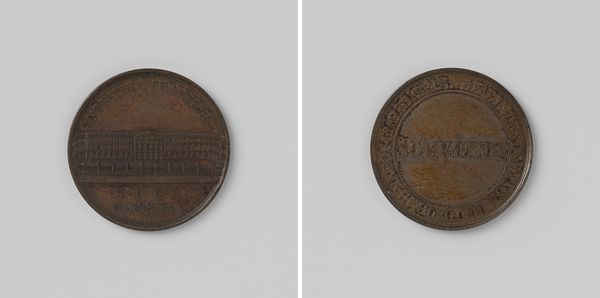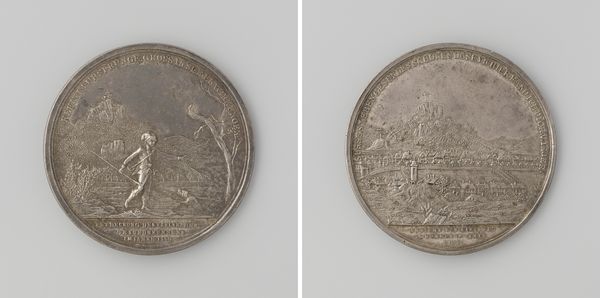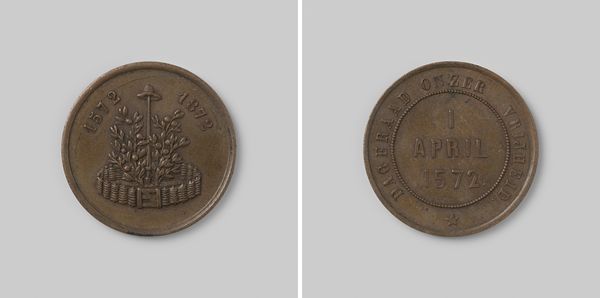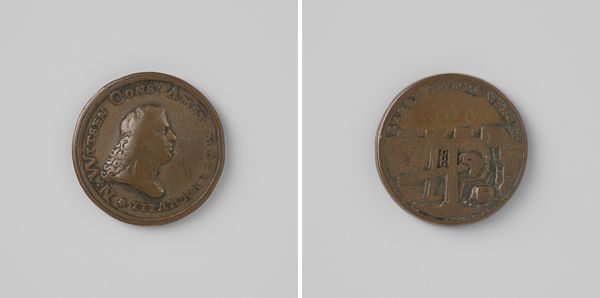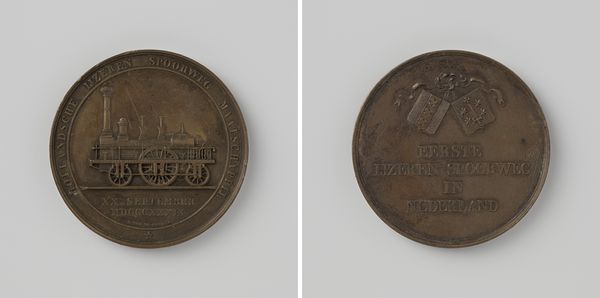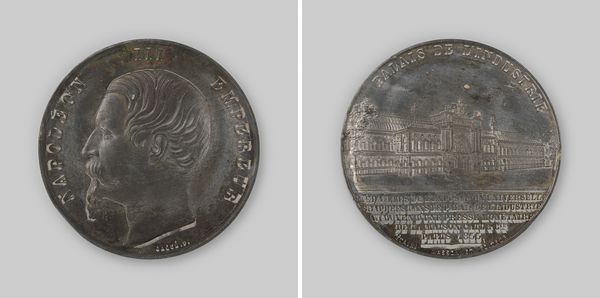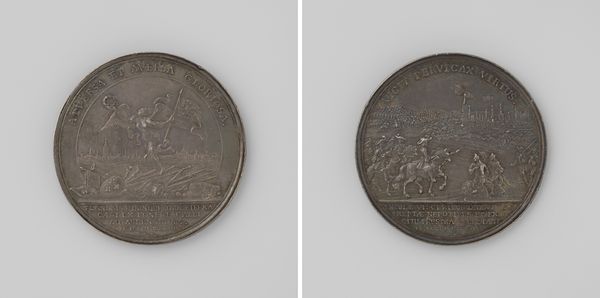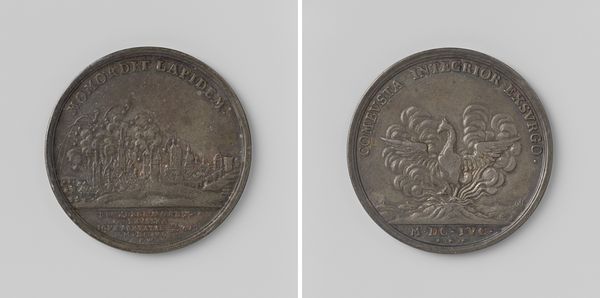
print, relief, bronze
#
neoclacissism
# print
#
sculpture
#
relief
#
bronze
#
cityscape
#
history-painting
Dimensions: diameter 4.8 cm, weight 64.74 gr
Copyright: Rijks Museum: Open Domain
Curator: This commemorative medal, "Eerste verjaardag van de Belgische revolutie op de Place des Martyres," or "First Anniversary of the Belgian Revolution on the Place des Martyrs", made in 1831 by M. Borrel, seems like an excellent opportunity to think about how political memory is shaped. Editor: My first impression is its formal restraint, wouldn't you agree? The Neoclassical style, the crisp lines, and the material's coldness lend it a certain distance. The symmetrical composition reinforces this feeling of control. Curator: But that's the point! This medal, made of bronze, is designed to monumentalize a very specific narrative. Look at the Place des Martyrs, meant to represent the Belgian nation-building process by visually linking independence with civic virtue and sacrifice. The relief shows the monument, flanked by what appear to be military flags. Editor: From a purely formal perspective, the juxtaposition of architectural monument on one face with the public building facade on the reverse is brilliantly balanced, almost like counterweights establishing equilibrium between nation and state. What is that structure; can we be sure of its symbolism? Curator: Precisely. One side depicts the monument dedicated to the fallen, invoking national sentiment, while the other, of what appears to be a portico building, alludes to governmental structure, and, indeed, authority. These aren’t just aesthetic choices, though; the Neoclassical aesthetic was employed as an implicit means of reinforcing the new, presumed rational political order by evoking the grandeur of antiquity. Editor: True, the semiotic coding here feels intentional. But to return to matters of technique, consider the crispness of the lines, typical of prints. Every contour is well-defined. Curator: Because this piece acts not only as a remembrance piece but a historical declaration! Its purpose as a medal allows for mass production and distribution. We need to ask who this was created for; whose narrative is being privileged. While intended as a unifier, it inevitably overlooks the varied experiences and potential dissonances within the Belgian populace at that time. The revolution wasn't clean, and whose voices aren't molded into this singular memorialization of that time? Editor: It reminds us, doesn't it, how even the most apparently neutral aesthetic choices—like line and form—can be powerful conveyors of meaning? Curator: It does. The very materiality of this piece reminds me how intertwined the historical past and sociopolitical present really are.
Comments
No comments
Be the first to comment and join the conversation on the ultimate creative platform.

